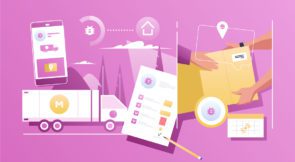When companies buy proprietary software, subscribe to SaaS services, or commission an agency or internal team of developers to create software, it’s not always easy to figure out how much money they’re spending.
For example, let’s say the year is 2000, and a company just bought 1,000 Microsoft Office licenses. When it comes to total cost of ownership (TCO), the check they write doesn’t tell the whole story. There are other things to consider, too, like support costs, implementation costs, hardware costs, and more. An organization might also have to spend time and resources training their employees. The list goes on.
Whenever an organization is making a decision about software, it is imperative to consider TCO. Otherwise, they may end up biting off more than they can chew.
What Is Software TCO?
Software TCO is a combined estimate of a program’s direct (i.e., capital) and indirect (i.e., operational) costs over a given period of time. It’s possible to measure TCO in terms of financial output, labor, time, and operational efficiency.
Calculating software TCO provides an overview of what a program actually costs compared to what a vendor states in its pricing model. For example, a SaaS company might say their product costs $5/month (or $60/year) per user. But when you factor in network, training, and support costs, among other things, it may end up costing twice that.
When companies neglect to calculate TCO, they may end up with buyer’s remorse. As such, it is critical that organizations never overlook this critical process.
Software TCO Illustrated: Test Automation Software
To give you a better idea of what software TCO looks like, let’s imagine an organization is thinking about purchasing test automation software.
Companies are increasingly using test automation platforms to analyze how their code performs across browsers, operating systems, and devices. Test automation platforms enable developers to iterate faster and more effectively than they could when testing code manually.
However, test automation platforms still have their share of challenges. For example, platforms sometimes lack flexibility and connectivity to third-party development or communication tools, making it difficult for developers to customize their software and collaborate with team members. Of course, engineers can spend a lot of time building custom integrations—and the money spent on those endeavors should be factored into TCO.
Test automation platforms can also be notoriously expensive. It’s not uncommon for costs to extend far beyond licensing fees. Oftentimes, test automation software comes with operational costs that can drive up the price of production over time.
This is especially true with “freemium” products that may seem like a good deal at first glance but wind up turning out to be much more expensive down the line when factoring in hidden costs (e.g., training, infrastructure, and support).
As such, it’s very important to consider the software total cost of ownership (TCO) when purchasing a test automation platform—or any piece of software for that matter.
Using Software TCO to Determine ROI
Understanding the software TCO of a test automation platform will also enable you to calculate your projected return on investment (ROI). As a result, you will have the necessary insight needed to determine whether the investment makes sense for your organization.
To predict your ROI, first calculate the net gain from transitioning to the test automation platform. Then, divide that figure by the net investment.
How exactly do you measure net gains with test automation software? Let’s take a look.
Stronger Software
Software bugs can go undiscovered and make their way into production, leading to “defect leakage.” However, with test automation, you will be able to discover errors earlier in production and reduce defect leakage—thereby improving the overall quality of your software.
To determine this type of gain, track how much time and money your company typically spends discovering and fixing software bugs in software you ship. Next, use that information as a benchmark to determine the monetary gain that comes with switching to an automated platform.
Overall Time Savings
Time is money—especially in the fast-paced world of software development. While testing is important, it shouldn’t take more time than software development. Yet the painstaking nature of software development makes it hard to test manually with any semblance of urgency—especially when testing software across multiple environments.
To calculate your anticipated time savings, determine how long it will take to develop, deploy, and maintain new automated tests and compare that figure to your current averages. Make sure to factor in parallel testing, too, which will allow you to run multiple tests at the same time.
Test Reusability
You can reuse tests over and over, eliminating redundant evaluations—and saving money along the way. Track how often you duplicate tests on average, and how much it’s costing your company.
The more tests you can reuse, the better.
Once you have a clear understanding of how your company will benefit from a test automation platform, you’ll need to determine how much your organization will have to sacrifice in time, labor, and money.
Factors to Consider When Determining Test Automation Software TCO
Here are some of the important factors that you should consider when calculating the overall cost of your test automation software:
Data Conversion and Migration
Discrepancies can sometimes arise when migrating data from a legacy database to a destination database. It’s therefore important to conduct data migration testing on both the data and application levels to ensure quality and accuracy.
Data migration testing will require either purchasing a data migration tool or manually pulling data from your source database and migrating it to your destination. Either way, you’re increasing overall TCO.
Learning and Investment
Ideally, your software development team will be able to hit the ground running with automation. However, this may not always be the case.
Your team may be adept at creating and testing code manually. But they may not have the necessary skills to build and maintain test automation in-house.
Before you invest in a platform, assess your team’s level of comfort and understanding with automation. You may have to outsource automation or train your team to get them up to speed. Both options will cost money and may delay your time to market.
Analyzing Test Results
Automated tests need to be consistent in order to detect test failures.
Sometimes, though, automated tests will pass in one run and then fail in another—which means it’s an unstable test.
When this occurs, you need to examine the test to identify the cause of the failure. Manual analysis can take a significant amount of time—especially when there are many inconsistent readings.
Open Source Headaches
Using open source software might sound great. Much of it is free, after all. But oftentimes, open source tools come with a price in terms of additional costs and headaches.
For example, open source code can be challenging to work with as there is typically no formal spport channel when you need assistance. Developers often have to overcome challenges manually using online communities.
What’s more, using open source software can lead to reduced productivity due to downtime and poor performance. And cost creep can arise from ongoing maintenance issues, too.
Regression Testing
The point of updating software is to make sure each version is better than the last. However, this doesn’t always happen. In some cases, a piece of software will regress to an undesired state.
Regression testing can determine whether a fix will work without negatively impacting the rest of the code. As such, it is an important part of the test automation process.
However, manual regression testing is laborious, time consuming, and risky. For example, going back into code and altering it can cause previously fixed bugs to reappear. Even a small change can lead to further regression—resulting in prolonged periods of downtime which can be very costly.
Check out Testim’s Buyer’s Guide
As you can see, there are many important things to consider when evaluating the TCO of any kind of software—including test automation tools. Cost is just one factor.
In addition, you’ll also want to spend some time thinking about your specific needs and challenges, features that you will require, and vendor attributes.
There are also post-purchase needs to consider, too, like backup, disaster recovery, and integrations.
For a complete breakdown of how you should approach buying a test automation platform, check out our post on evaluating UI and end-to-end testing solutions.
Or just get started using Testim for free, now up to 1,000 runs per month.
This post was written by Justin Reynolds. Justin is a freelance writer who enjoys telling stories about how technology, science, and creativity can help workers be more productive. In his spare time, he likes seeing or playing live music, hiking, and traveling.




